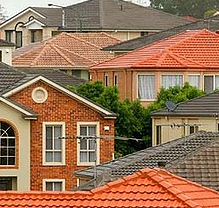
From Fitch today:
Fitch Ratings-Sydney-03 July 2014: Fitch Ratings says that Budgewoi (2262), on the Central Coast of New South Wales, has become the worst performing postcode in Australia for missing housing loan payments, with a 30+ days delinquency rate of 3.7%. Budgewoi has been among the 20 worst performing postcodes each March and September over the five years since March 2009, with the exception of September 2012, but until now, has never been the worst performing suburb in Australia. Surfers Paradise, in Queensland, was previously the worst performing postcode, however has slowly improved from a rebound in the Gold Coast housing market.
On average, the delinquency rate across Australia increased to 1.35% at end-March 2014, up from 1.24% at end-September 2013, slightly driven by the Christmas overspending. Interest Rates have had a slow impact during the twelve months to March 2014, as arrears are 10bp lower than 12 months before. During the past 12 months, local unemployment and economic trends have become the major drivers in regional mortgage performance, particularly in the current low-interest rate environment.
Although Queensland returned as the worst performing state in Australia for mortgage payments with a delinquency rate of 1.42%, there was little divergence among the delinquency rates across all six states. As of March 2014, the gap between the best and worst-performing states was at a record low 11bp (versus the average of 76bp over the past eight years), indicating that borrowers across all states are in a similar situation in terms of serviceability.
Fitch has monitored an unexpected deterioration in mortgage performance in Victoria, recording a delinquency rate of 1.37% at end-March 2014, up 17bp from September 2013. Victoria was the only state to experience an increase in delinquency rates (8bp) in the 12 months to March 2014, despite the favourable monetary policy. For the first time since this report was published, the state also performed worse than New South Wales (1.32%).
Seven of the worst performing suburbs (four of the top five) were located in Victoria and no region in Victoria was among the best-performing, by value of mortgages.
Hume City, Victoria (VIC), continued to be the worst-performing region in Australia with a 30+ days delinquency rate of 2.93% at end-March 2014, the highest level since early 2008. Hume (VIC), Melton-Wyndham (VIC) and Northern Outer Melbourne continued to show a significant deterioration in mortgage performance and in the six months to March 2014 the delinquency rate in these regions increased on average by 59bp, compared with an average rise of 11bp nationally.
These regions have historically shown strong sensitivity to mortgage rates due to socio-economic factors such as high unemployment and low-income households as is the case for regions located in the western and south west of Sydney. Fitch believes that the divergence in mortgage performance reflects the trends in the local economy and the high unemployment rate in North West Melbourne.
Delinquencies in the Gold Coast continued to improve. Gold Coast East was the region that improved the most in the six months to March 2014, as arrears declined by 36bp to 1.64%. The recent stabilisation in the housing market and economy has resulted in the higher auction clearance rates of foreclosed properties. This, in turn, reduced 90+ days arrears, which fell to 0.62% at end-March 2014 from 1.22% at end-March 2013.
It is quite unusual for delinquency rates to be climbing at this stage of the cycle and helps illustrate the ongoing structural pressures on the economy. Outer northern and western Melbourne have traditional strengths in small and medium sized manufacturing so that may be one cause. They are also areas with large proportions of “leap frog” McMansion housing developments that the RBA’s housing inflation agenda is likely missing. Reader feedback welcome.

